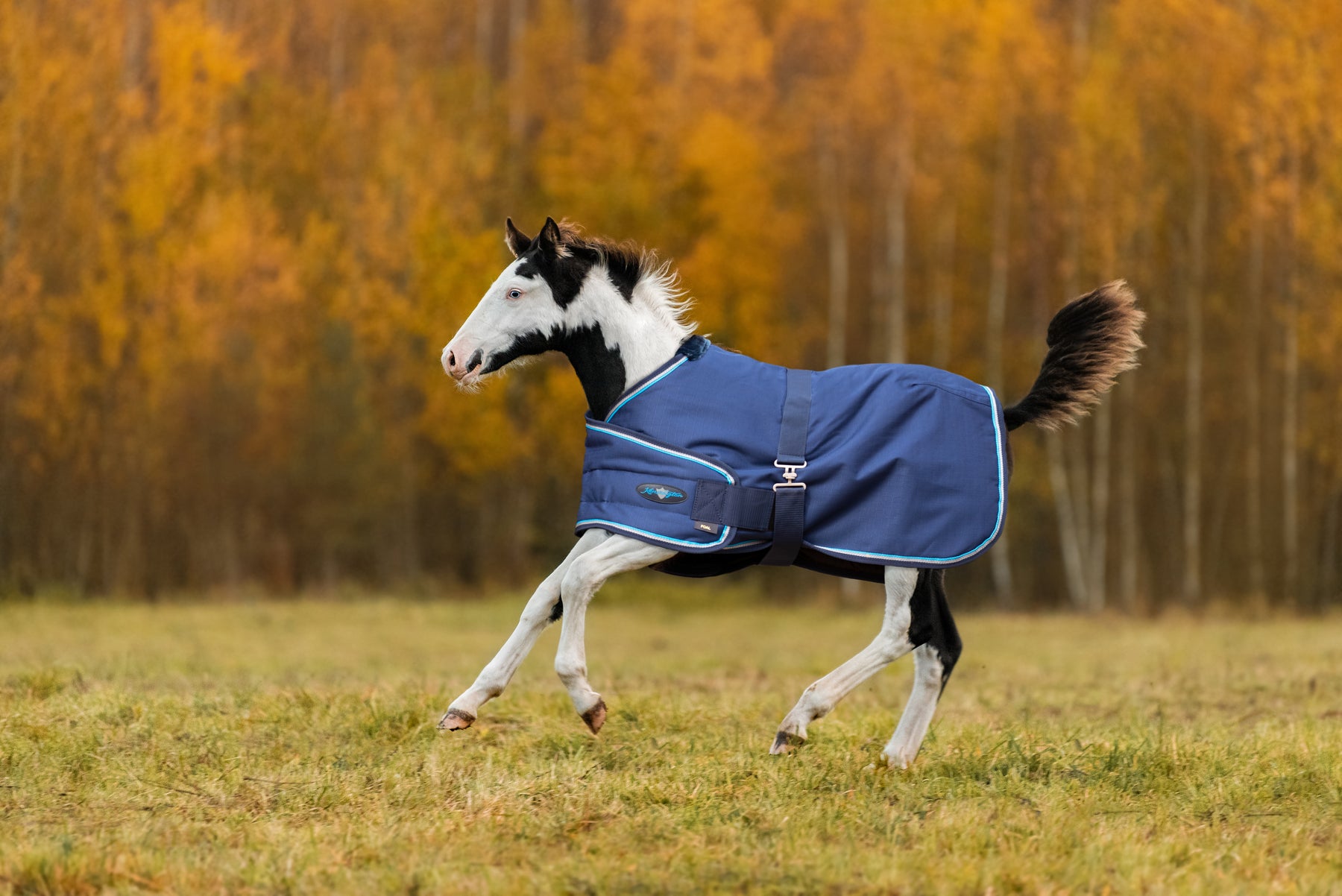
The Importance of Blanketing Foals: Ensuring Proper Thermoregulation for Young Equines
As spring approaches and foaling season begins, horse owners and breeders are tasked with the crucial responsibility of ensuring the well-being of newborn foals. Among the various challenges faced during this delicate stage of life, one of the most critical concerns is the inability of foals to effectively regulate their body temperature. Unlike adult horses, foals are born with underdeveloped thermoregulatory mechanisms, making them highly vulnerable to fluctuations in temperature. In this blog, we'll delve into the reasons why foals struggle with thermoregulation and explore the importance of providing them with appropriate blankets based on climate conditions.
Understanding Foal Thermoregulation
At birth, foals lack the fully functional thermoregulatory systems present in mature horses. Their ability to regulate body temperature through mechanisms such as shivering, sweating, and adjusting blood flow to the skin is not fully developed. As a result, foals are highly susceptible to hypothermia in cold environments and overheating in hot conditions. Their small size, relatively large surface area to volume ratio, and limited fat reserves further exacerbate their vulnerability to temperature extremes.
The Role of Blankets in Foal Care
Blanketing foals is a crucial practice to help mitigate the risks associated with inadequate thermoregulation. By providing an extra layer of insulation, blankets help conserve the foal's body heat in colder weather, preventing hypothermia. Additionally, blankets can offer protection from wind and moisture, further enhancing the foal's comfort and well-being.
Choosing the Right Blanket for Foals
When selecting blankets for foals, it's essential to consider various factors, including the climate, age, and health of the foal. Here are some key points to keep in mind:
1. Climate Considerations: The type of blanket required will depend on the prevailing weather conditions. In colder climates, heavier blankets with insulation are necessary to keep foals warm, while lightweight or waterproof blankets may suffice in milder or wetter environments.
2. Foal Age and Health: Newborn foals have delicate skin and may require softer blankets with minimal friction to prevent irritation. Foals with health issues or compromised immune systems may benefit from blankets that offer added protection and warmth.
3. Proper Fit: Ensuring that blankets fit properly is crucial to their effectiveness and the foal's comfort. Ill-fitting blankets can cause chafing, restrict movement, or become tangled, posing risks to the foal's health and safety. Kensington offers an adjustable foal blanket that comes in two sizes, both of which grow with your foal.
4. Breathability: Opt for blankets made from breathable materials to prevent overheating and moisture buildup, which can lead to skin issues and discomfort.
Conclusion
In conclusion, the inability of foals to thermoregulate effectively makes them highly susceptible to temperature extremes, emphasizing the importance of providing appropriate blankets for their well-being. By understanding the unique challenges faced by foals and selecting blankets tailored to their needs and the prevailing climate conditions, horse owners and breeders can help ensure the health and comfort of these vulnerable young equines. Proper care and attention during the critical early stages of life set the foundation for the foal's future growth and development, making blanket management an essential aspect of responsible foal care.
